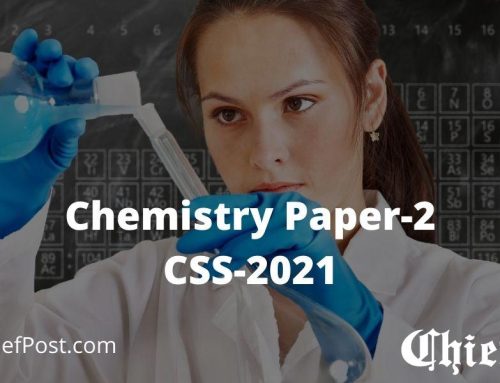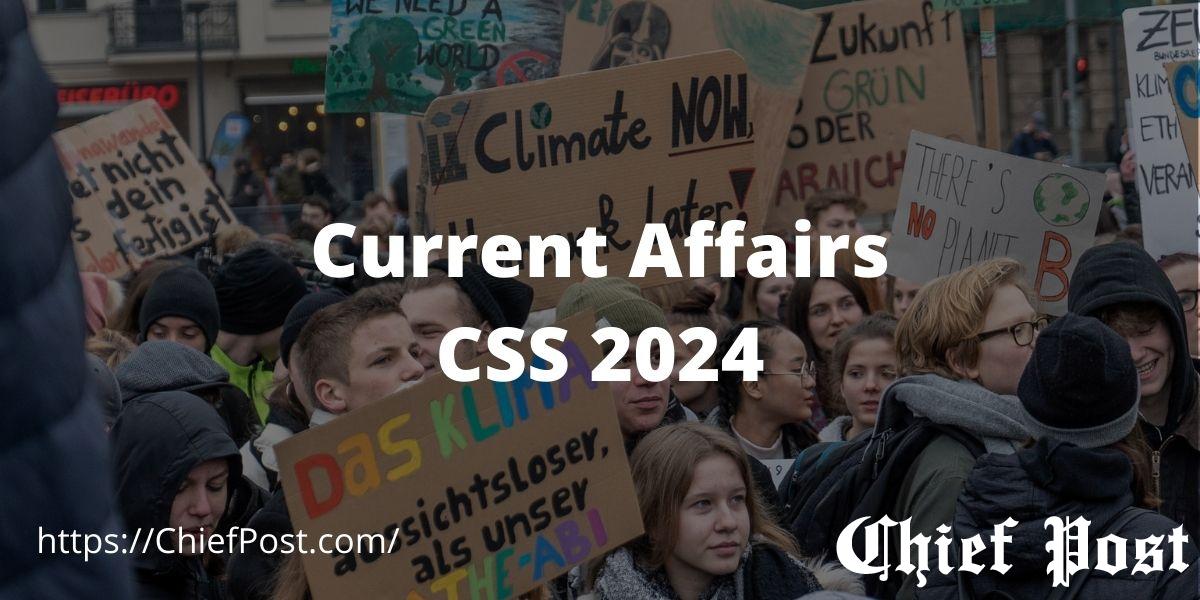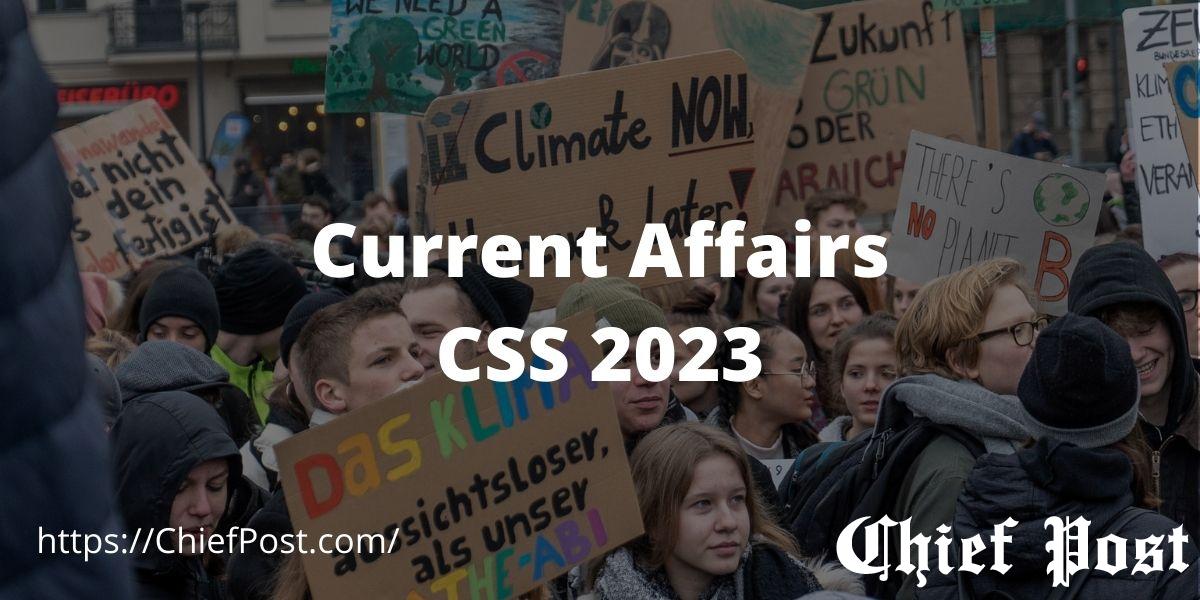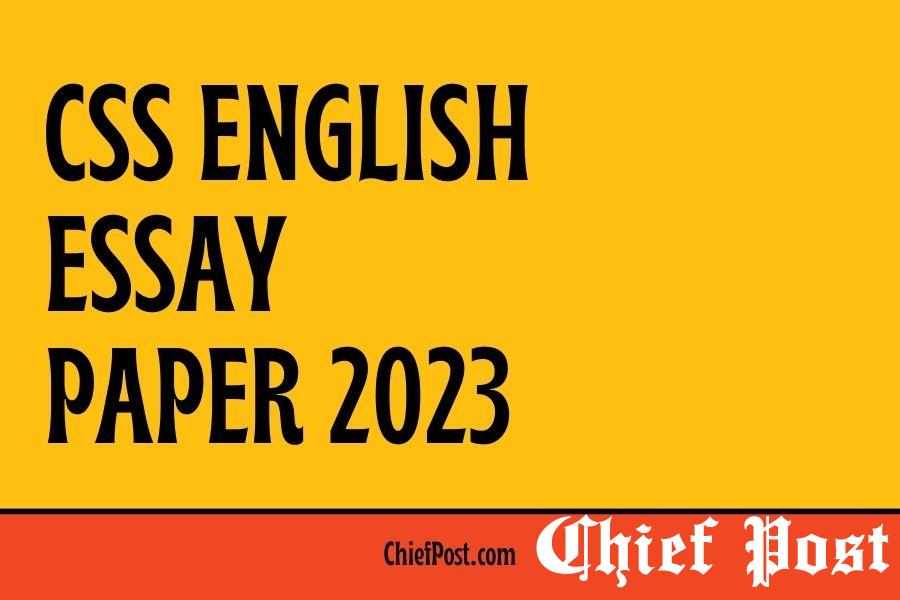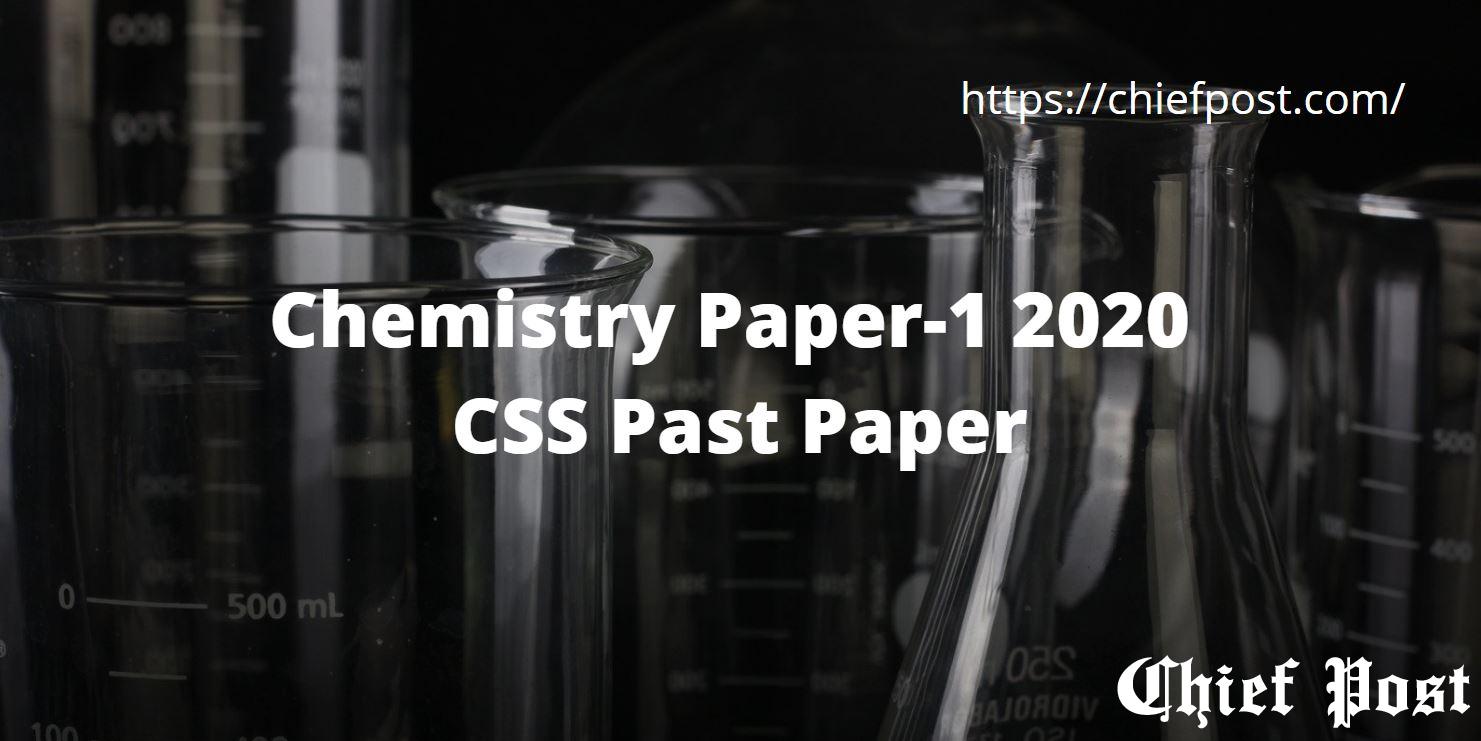
Chemistry Paper-1 2020 — CSS Past Paper
FEDERAL PUBLIC SERVICE COMMISSION
COMPETITIVE EXAMINATION-2020 FOR RECRUITMENT TO POSTS IN BS-17
UNDER THE FEDERAL GOVERNMENT
CHEMISTRY, Paper-1
TIME ALLOWED: THREE HOURS
PART-I(MCQS): MAXIMUM 30 MINUTES
PART-I (MCQS) MAXIMUM MARKS = 20
PART-II MAXIMUM MARKS = 80
NOTE:
- (i) Part-II is to be attempted on the separate Answer Book.
- (ii) Attempt ONLY FOUR questions from PART-II. ALL questions carry EQUAL marks.
- (iii) All the parts (if any) of each Question must be attempted at one place instead of at different places.
- (iv) Candidate must write Q. No. in the Answer Book in accordance with Q. No. in the Q.Paper.
- (v) No Page/Space be left blank between the answers. All the blank pages of Answer Book must be crossed.
- (vi) Extra attempt of any question or any part of the attempted question will not be considered.
PART-II
Q. No. 2.
- (a) Write two equations of state for real gases and compare them high lighting their important features. (10)
- (b) (i) Explain Heisenberg’s uncertainty principle. (05)
(ii) Discuss Born’s interpretation of wave function. (05) (10) (0)
Q. No. 3.
- (a) Explain the Kohlrausch law. Why do the real solution should deviate from the law? (10)
- (b) Compare Langmuir’s and Freundlich’s adsorption isotherms. (10) = (20)
Q. No. 4.
- (a) Explain the Arrhenius equation. Also high light its applications and limitations. (10)
- (b) — Explain various acid-base theories. What are hard and soft acids and bases? (10) =(20)
Q. No. 5.
- (a) Make a comparison of column chromatography and thin layer chromatography (TLC) by highlighting merits and demerits of the both. (10)
- (b) Explain Werner’s theory of coordination complexes. Give examples from d-block transition metals. (10)
Q. No. 6.
- (a) Give a comprehensive classification of various chromatographic techniques.
Also mention potential application of each. (10) - (b) (i) What is Hydrogen bonding. Explain. (05)
(ii) Describe Hybidization in p-block elements. (05) (10) (0)
Q. No. 7.
- (a) Explain crystal Field Theory (CFT) for d-block elements. (10)
- (b) Write an extensive essay on types of chemical bonding giving examples. (10) = (20)
Q. No. 8. Write short notes on the following: (Seach) (20)
- (i)Liquid junction potential
- (ii) Potentiometry
- (iii) Collision theory of Chemical reactions.
- (iv) Transition state theory.
**********
Most Popular
Tags
Botany
British History
Business Administration
Chemistry
Competitive Exam
Computer Science
Constitutional Law
Criminology
CSS
CSS-2021
CSS-2024
CSS 2022
Current Affairs
Economics
English
English Essay
English Literature
English Précis and composition
European History
FPSC
Gender Studies
General Science and Ability
Geography
Governance and Public Policies
History of Pakistan And India
International Law
International Relations
IR
Islamic History & Culture
ISLAMIC STUDIES
Islamiyat
Journalism & Mass Communication
Law
Mercantile Law
Pakistan Affairs
Pashto
Past Paper
Philosophy
Political Science
Psychology
Punjabi
Pure Mathematics
Sociology
Town Planning & Urban Management
Zoology

